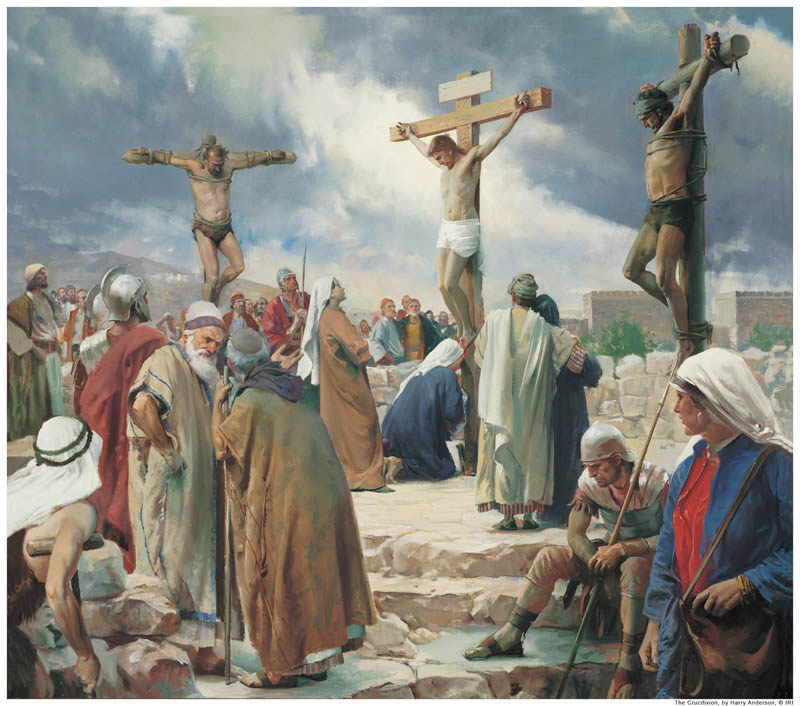Matt. 26:3, 57-66; Mark 14:53-64; Luke 22:54; Luke 3:2-3; John 11:49 (47-53); John 18:13-14, 19-24, 28; John 18:13-14, 19-24, 28; John 18:13-14, 19-24, 28; Acts 4:1-22.
Caiaphas was the son-in-law of Annas. Caiaphas and Annas were Sadducees, and were the high priests when Tiberius Caesar was in the fifteenth year of his reign, Pontius Pilate was governor of Judæa, Herod was tetrarch of Galilee, and John the Baptist came into the country about Jordan preaching the baptism of repentance for the remission of sins.
 He became the high priest (18 – 36 A.D.) following in Annas’ footsteps. In those days, the high priest’s position was purchased from Rome and was not an indication of a religious leader’s righteousness. Caiaphas, in order to protect his position, conspired with other chief priests in the Sanhedrin (ruling Jewish court) to take Jesus and do away with him. Betrayed by Judas Iscariot, Jesus was taken to Annas, then to Caiaphas, who conducted an illegal trial against the Savior. Caiaphas found Jesus guilty of blasphemy and sentenced him to die.
He became the high priest (18 – 36 A.D.) following in Annas’ footsteps. In those days, the high priest’s position was purchased from Rome and was not an indication of a religious leader’s righteousness. Caiaphas, in order to protect his position, conspired with other chief priests in the Sanhedrin (ruling Jewish court) to take Jesus and do away with him. Betrayed by Judas Iscariot, Jesus was taken to Annas, then to Caiaphas, who conducted an illegal trial against the Savior. Caiaphas found Jesus guilty of blasphemy and sentenced him to die.
The Jews, under the thumb of the Romans, were not allowed to carry out capital punishment. Thus, Caiaphas sent Jesus to Pontius Pilate with a trumped-up charge of treasonous behavior — here was a man who had set himself up as the “King of the Jews,” when only Caesar could be king.
After Christ’s crucifixion, Caiaphas and other high priests saw a threat in Christ’s apostles, who were able to perform miracles and taught Christ’s doctrines. Caiaphas and his cohorts, afraid to arrange the deaths of the apostles for fear of the people, arrested Peter and John and warned them never to mention the name of Jesus. Of course, the apostles kept on teaching and performing miracles among the people, always in danger.
The story of Caiaphas is a good example of the saying “Absolute power corrupts absolutely.” The Sadducees had lost sight of many of the basic principles of the gospel. They no longer believed in the resurrection. This was the moneyed class of “religious” Jews, who purchased their positions from the Romans and were beholden to them. They compromised at every turn to obtain and retain their positions of power. The high priests were supposed to be shining examples and righteous judges of the Law of Moses. Yet, they broke many of those laws to unfairly accuse, try, and condemn the only sinless man who ever lived. Not only that, but Jesus, as Jehovah, was the giver of the very law they accused Him of blaspheming against.
Caiaphas created the ultimate irony when he stated that it was better for one man to die, than a whole nation dwindle in unbelief. The thoroughly corrupt man actually prophesied of Christ’s mission:
Nor consider that it is expedient for us, that one man should die for the people, and that the whole nation perish not. And this spake he not of himself: but being high priest that year, he prophesied that Jesus should die for that nation; And not for that nation only, but that also he should gather together in one the children of God that were scattered abroad (John 11:50-52).
*This article was adapted from the LDS Bible Dictionary and Every Person in the New Testament by Lynn F. Price (Horizon Publishers, [2002], 25-26).
Additional Resources:
The Book of Mormon as a Companion to the Bible
